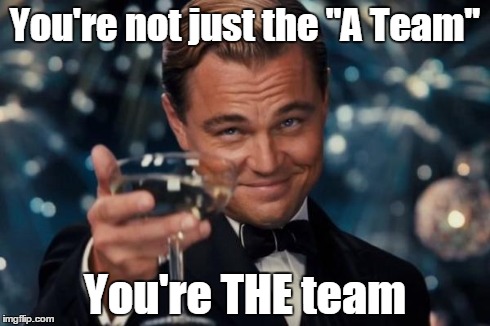Recently, I was talking with a modern day substitute teacher. She shared with me that not too long ago she was called into a classroom where many computers were set up. Being that it was the end of a particular learning cycle (I think it was 9 weeks), it was time for assessments. While each student waited their turn, the others were to relax by playing games on “Cool Math”. What struck her as eerie? The absolute silence of a group of 8th graders!
I’ve no idea which “Cool Math” game it was the students were playing, but if you haven’t seen one of their games, here’s a short You Tube video of one I found boring after the first couple of minutes:
[youtube https://www.youtube.com/watch?v=H8nQEr92LQk&w=420&h=315]
Why We Both Think This is Wrong:
First off, in 8th grade you’re at an age where social interaction is vital, a bit awkward, but vital. You’re about 13 years old. You are needing concrete parameters in life: right and wrong, hot and cold, etc. You’re going to be moody. ‘Preoccupied’ is almost a constant state of being at this age. We know the suggested seat time of students in front of a computer is not nearly as long as is being put into practice in classrooms now. This substitute said the entire scene was zombie like. Sleep deprivation is rampant nowadays, in most classrooms. Having headphones on, playing a computer game independently doesn’t sound to either of us like an investment in anyone’s future. It sounds more like an excuse to take up taxpayers money.
So, what was missing from the above real life scene? No social interaction, no opportunity for the substitute to engage the students, from the looks of the sample of “Cool Math”, I say almost zero math content, but plenty of data gathering on how each student was playing. Too much seat time, too little whole body movement.
Your turn:
What’s your story? Do you have a similar observation of what’s happening in the classroom, on the playground, or anywhere else? Would you consider sharing your account of the events? If so, please contact me, I’d love to have your story shared.
Cool Math, Hot Mess:
If you’ve not seen the “Cool Math” list of games, here’s the link: http://www.coolmath-games.com/1-complete-game-list.html
If you were to click on the ‘Standards’ icon on the “Cool Math” Website, you’d see several links, one for technology, math, and so on. Some of the links are broken and don’t work. The one for math, however, took you to the National Council of the Teachers of Mathematics.
Fine, go there and you won’t see CCSS on the homepage, you have to dig for it. There are SO many icons, thumbnails and words, it’s almost overwhelming. However, we know where to look…the “Position Paper”. Click there! JACKPOT! Here’s the ‘hot mess’ excerpt: “The National Council of Teachers of Mathematics (NCTM) is committed to helping educators interpret and understand the Common Core State Standards. The Council supports educators’ efforts to develop and put in place the associated comprehensive and coherent school, district, and state systems of instruction and assessment. Instruction and assessment that are aligned with these standards must be rooted in and promote principles of access and equity. When properly implemented, the Common State Standards will support all students’ access to, and success in, high-quality mathematics programs. Such programs lead to knowledge of mathematics content and reasoning skills that enable students to apply mathematics effectively in a myriad of careers and in everyday life.” (the rest of their statement: http://www.nctm.org/ccssmposition/)
Those other educational standards links?
The National Science Education Standards link directs you to an open on-line book (http://www.nap.edu/openbook.php?record_id=4962). If you have a lot of time, you could read it to find out if it’s CCSS aligned. I did 3 general searches and got nowhere. If you type in the NSES all by itself, you are directed to the National Science Teachers website, where it appears CCSS is ‘yesterday’s news’. Why? Right now, it’s STEM, Next Generation Science Standards. They DO have quite a bit connecting CCSS to the NGSS. One seminar, given in August of this year, is available, but you’ll need to pay around $80.00 to access it. Here’s a link to their CCSS search page, several of the items appear to be free. http://learningcenter.nsta.org/search.aspx?action=quicksearch&text=common%20core%20state%20standards
National Social Studies Standards, over 100 CCSS aligned workshops will be held at the upcoming National Conference for Social Studies. See: http://www.socialstudies.org/conference/CCSSsessions
So, out of the 6 links representing 6 subjects of traditional study, all the links which worked are CCSS aligned. Yet, remember, if you were to conduct a quick check of Cool Math AND you had no clue it was Common Core connected, you’d never realize it.
Common Core’s Math website:
Remember that line we’ve heard so much…you know, “Common Core Standards are just THAT..they’re Standards!” Yeah, right, however, also remember, my blog is a ‘turnip truck free’ blog! Meaning we’re no dummies here. We can spot a lie a mile away when it’s connected to Common Core. I have a Coalition website to share with you that’s all about the CC Math. http://www.nctm.org/standards/mathcommoncore/Default.aspx?__taxonomyid=418028&path=%5Cmathcommoncore.org%5CProfessional+Development&__taxonomyshowall=1 Here, you’ll find all kinds of resources devoted to math, the Common Core way.
Here’s an excerpt from the CCSS Executive Summary, it’s a live link at the top of the page of the above website that took me to another Math related website. There, I found lots of info, including this downloadable document with a 2011 date. It contained (at one point) tools you could use to help decide your math curricula. However, I didn’t find the tools. But I did find this closing paragraph (where I’m assuming the tools were immediately following)
“Careful use of these tools to analyze curriculum materials cannot be accomplished in a single day. The analysis should take place over several months as teachers and others review the materials using the three tools and as reviewers have in-depth discussions about the Common Core State Standards for Mathematical Content and their progressions across grades, content and trajectories, the Standards for Mathematical Practices and the overarching selection issues of equity, assessment and technology.”
My question..if this was known, why did our states rush in and almost no time taken to ease into CCSS (that is assuming it was legal and all was properly vetted)
CCSS Executive Summary Curriculum Materials AnalysisTools
Also from the same website and 2011, is this document, CCSSO Mathematics Curriculum Analysis Project, CCSSO Mathematics Curriculum Analysis Project.Whole Document.6.1.11.Final (1) The report is from the Chief Council of State School Officers, was underwritten by Brookhill Foundation and Texas Instruments.
Here’s a quote you may find interesting, discussing the need for choosing textbooks.
“Predictably, some publishers already claim that their existing curriculum materials and textbooks align with CCSSM (Gerertz, 2010); however, as stated by Michael Cohen, president of Achieve, Inc., “Almost no one thinks there are solid processes in place to examine the alignment of instructional materials to state standards.”
Now, the Committee knew folks wouldn’t have a lot of time to review textbooks, so they relied on the following experts to make the tool set referenced above, in order to set the pace so you, if in charge of selecting textbooks would have a set of standards for THE Standards.
Hmmm…some of the names on this expert list were also ones responsible for writing the CCSS. So, if I write something, then write a tool to help you choose, I’m very much in control, aren’t I? IF I were to use that control to purposefully misguide you, wouldn’t that make me a scoundrel?
My friends, it appears, those who wrote the Standards also wrote the ‘how to select’ rules to guide you to textbooks THEY KNEW would fit their mold. Whoa, what a ‘sweet’ business deal! What a ‘sucky’ educational mess for our students, teachers, parents and citizens.
Tool guide crafters:
- William S. Bush (chair), Mathematics Educator, University of Louisville, Kentucky
- Diane J. Briars, Mathematics Education Consultant, Past President, National Council of Supervisors of Mathematics, Pennsylvania
- Jere Confrey, Mathematics Educator, North Carolina State University
- Kathleen Cramer, Mathematics Educator, University of Minnesota
- Carl Lee, Mathematician, University of Kentucky
- W. Gary Martin, Mathematics Educator, Auburn University, Alabama
- Michael Mays, Mathematician, West Virginia University
- Valerie Mills, Supervisor, Mathematics Education, Oakland Schools, Michigan
- Fabio Milner, Mathematician, Arizona State University
- Suzanne Mitchell, Mathematics Educator/Administrator, Executive Director of the Arkansas Science, Technology, Engineering and Mathematics (STEM) Coalition; President, National Council of Supervisors of Mathematics
- Thomas Post, Mathematics Educator, University of Minnesota
- Robert Ronau, Mathematics Educator, University of Louisville, Kentucky
- Donna Simpson Leak, Superintendent, Rich Township High School District 227, Olympia Fields, Illinois
Marilyn Strutchens, Mathematics Educator, Auburn University; President, Association of Mathematics Teacher Educators, Alabama


2 thoughts on “WYBI Wednesday: Silent Classrooms”